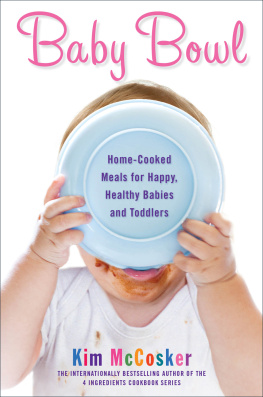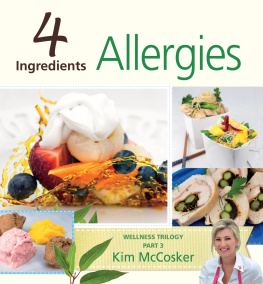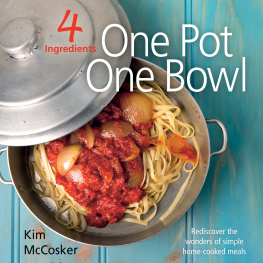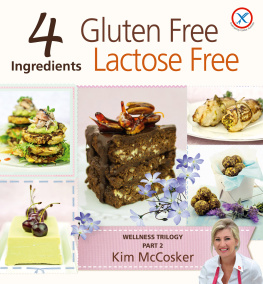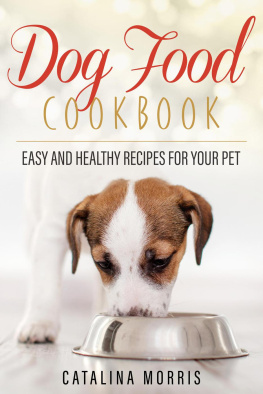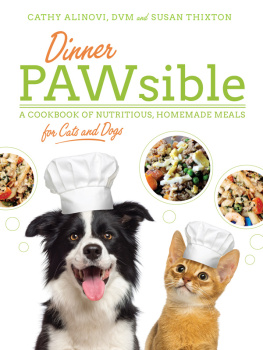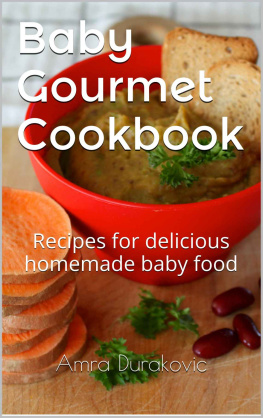THERE ARE 4.2 MILLION DOGS IN AUSTRALIA
THERE ARE 3.3 MILLION CATS IN AUSTRALIA
FUR-MAMA
Im a devoted Mum to three beautiful boys, trying my hardest to raise thoughtful, kind, clever and healthy kids. To do this, my husband and I have surrounded them with pets. Animals that love them, and that they love in return.
We, like 8 million others in Australia, have pets. Im a Fur-Mama and I truly believe that pets are a lesson in life. They require walks and water, play time and sleep time, love and attention, washing, brushing, shelter and nourishment to give them the best chance at a long, happy and healthy life.
Just as cooking for family and friends is rewarding, so to it is when you cook delicious, healthy, homemade meals for your pets. No additives, no preservatives and no numbers. At home, we know exactly the ingredients that make their meals and nourish them. Home cooked foods are economical and allow us to cater for the different nutritional needs our many varied pets may have. Weve had our beautiful Cavoodle, Johnny for over 8 years and he loves chicken jerky, but at $30/kg its expensive when you compare chicken breast at $9.99/kg and the simplicity of making your own.
It is my hope that the information and recipes within inspire you to cook delicious, nutritious food for your pets. They will absolutely love your efforts, their tail will wag continually, they will purr contentedly, their eyes will glaze with admiration and thanks and just as you feel like Mother Earth when you make something your children gobble up, so you will, when your pets do to.
Happy Cooking

AUTHORS DISCLAIMER
I am not a veterinarian, nor a nutritionist, in fact, I did a degree in International Finance at university.
But I write cook books; simple, easy, practical cookbooks and as a family who have had the sweetest dog for 8 years, a Guinea pig for 3 years and three goldfish just about to turn 1. They arent just our pets; they are our family.
Over the years, our extended family has been varied, chickens, cats and for a brief moment even a mouse. We have forged a great relationship with our vet and, with a good dose of common sense, have managed to raise happy healthy animals. With my boys, we regularly make treats and dinners for our pets and its only natural to extend these recipes to families looking for homemade alternatives by sharing our pet cookbook.
This is a summary of those simple recipes and should be considered a guide, not gospel.
Use this book logically, if for eg., your dog has allergies or other health issues, if it is a show dog, work dog, or breeding dog then dietary requirements will vary. Please consult your veterinarian with any concerns and enjoy PET COOKBOOK for what it is - a simple, practical guide.
WHAT TO FEED YOUR PETS
I worked on this book for over a year. Initial research was confusing, as there are many conflicting reports and opinions, one expert telling you something is OK, while the very next tells you why it is wrong. Theres a lot of varying opinions when it comes to animal nutrition.
Looking for basic guidelines, I rang the Australian Veterinary Association (AVA) and spoke to their National Marketing Manager who guided me to the World Small Animal Veterinary Association (WSAVA) and their Global Veterinary Development Nutritional Assessment Guidelines. Although this offers no specific advice on which foods to give which animals and is written for veterinarians, it provides good guidelines to assess the nutritional health of your pet.
WSAVA Global Veterinary Development
The WSAVA has developed a global initiative to standardize five vital signs as part of a routine physical check-up and the overall health for all small animals.
These are:
1. Temperature
2. Pulse
3. Respirations
4. Pain assessment
5. Nutrition assessment.
Good nutrition enhances our pets quality and quantity of life and incorporating it into regular pet care is critical for maintaining their health, as well as their response to disease and injury.
It is imperative to work with a veterinarian to determine if current amounts and types of food are appropriate, based on our pets life stage, lifestyle and level of activity, disease, body condition and medications.
If diet factors are determined to be inadequate, together, prepare a plan for food and treats that provide appropriate calories and nutrient content for the longest, happiest life possible for our beloved pets.
A PET PARENTS PANTRY
The following is a list of ingredients in the recipes that comprise this cookbook. NOTE: I do not own all of these at any one time, I simply buy them when required, knowing they are not harmful to my pets. Naturally every pet is different, please use as a practical guide, and consult your veterinarian with any concerns.
DOGS
Apple
Bacon, nitrate free
Banana
Beef stock
Boneless fish fillets
Brown rice
Salmon
Cannellini beans
Cottage cheese
Chicken; breast, thigh, mince
Beans
Broccoli
Coconut oil
Carrots
Cheese
Mint
Eggs
Flaxseed, ground
Kale
Kidney beans
Mince (lean beef, chicken or turkey)
Milk
Natural peanut butter
Natural yoghurt
Rolled oats
Omega 3 or 6 oil (flaxseed or fish)
Parmesan cheese
Parsley
Pork, mince
Quality dry dog food
Spinach
Sweet potato
Raw honey
Tuna
Wholemeal flour
CATS
Salmon, boneless
Brown rice
Blueberries
Broccoli
Cheddar cheese
Chicken breast
Chicken liver
Chicken stock
Cottage cheese
Eggs
Fish sauce
Green beans
Liver
Natural yoghurt
Mince (lean beef, chicken or turkey)
Mint
Polenta
Powdered milk
Spinach
Rolled oats
Oil olive / vegetable / cod
Parmesan cheese
Parsley
Sardines, canned in oil
Tuna, canned
Wholemeal flour
GUINEA PIGS
Apple
Asian greens
Broccoli
Capsicum
Carrots
Citrus
Grapes
Grass hay
Green beans
Green leafy vegetables
Cucumber
Raw honey
Kiwi fruit
Olive oil
Rolled oats
Parsley
Quality guinea pig pellets
Sweet potato
Zucchini
BIRDS & CHICKENS
Apple
Banana
Berries
Bird seed
Broccoli
Brown rice
Carrots
Desiccated coconut
Dried figs
Grapes
Green leafy vegetables
Legumes
Natural peanut butter
Nuts, raw
Oranges
Rolled oats
Polenta
Pawpaw
Pumpkin
Quinoa
Raisins
Raw almonds
Sprouts
Sweet potato
Wheatgerm
Wholegrain bread
PET ALLERGIES
Yes allergies in pets do exist, in fact food allergies can appear in animals at any age. A lot of the common offenders are the most common ingredients in both dog and cat foods. This correlation is not a coincidence. While some proteins might be slightly more antigenic than others, many proteins are similar in form and the incidence of allergic reactions are probably associated with the amount of exposure. Just like humans, it can often take some detective work to determine what food is causing an animals allergic reaction. An elimination diet will most probably be used to determine what food a pet is allergic to.


